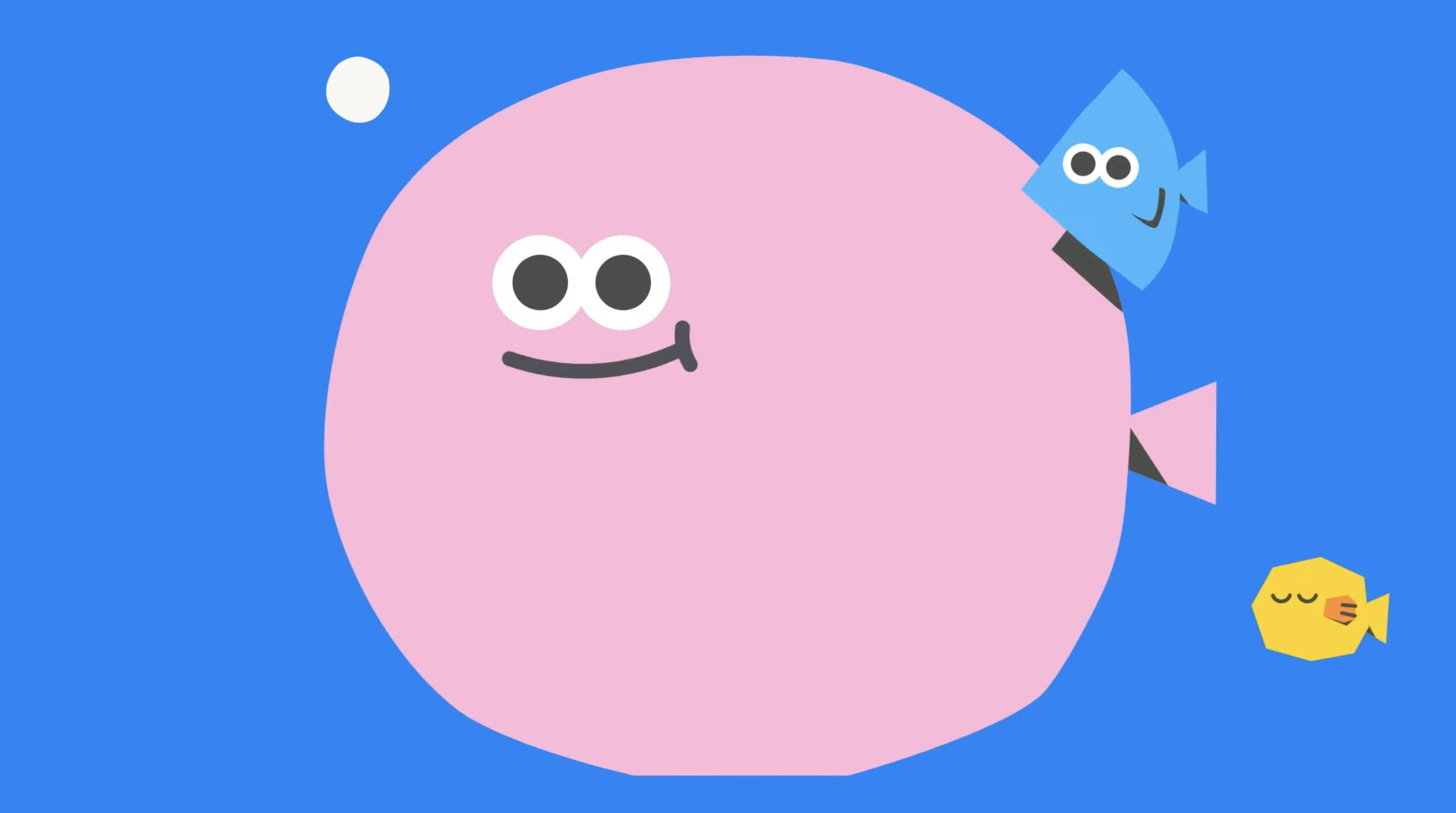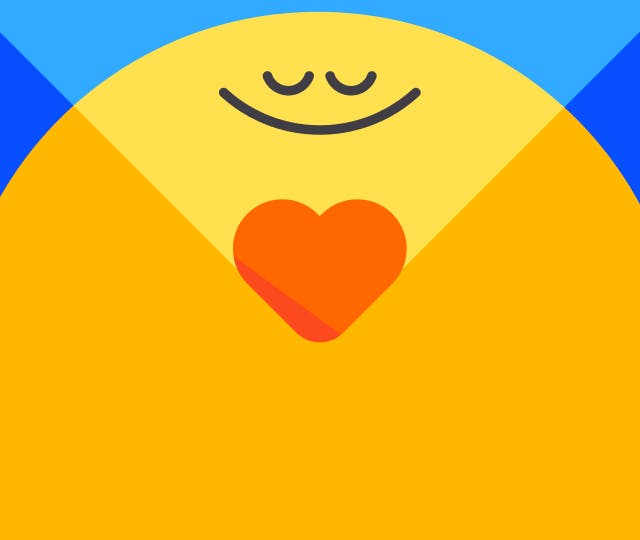Meditation for kids
Researched and written by our mindfulness and meditation experts | Learn more
Oct 6, 2021
For many of us, meditation is something we picked up later in life. But imagine if we started experiencing its benefits at a much younger age: could it have helped us navigate the emotional rollercoaster that is puberty? Allowed us to study more efficiently for tests? Taught us how to communicate with our classmates and parents in a kinder way? Research says yes, yes, and yes.
At first, the idea of asking a child to meditate may seem like a laughable task. It’s hard to get many kids to sit still for 30 seconds, let alone 10 minutes. But teaching kids the fundamentals of meditation isn’t entirely out of reach. With the right approach, parents, educators, caregivers, and loving relatives can teach meditation for kids to help them understand how to calm their minds and settle into their bodies, allowing them to better process their feelings, retain new information, and improve focus — and do that much sooner than we’d think.

Watch: Helping Kids Focus
6 min
The benefits of meditation for children
Time and time again, meditation and mindfulness at work have been proven to help adults excel in their professional lives. And while younger kids may be decades away from a career, they may already be full-time students. In a school setting, meditation can have a measurable, positive impact.
One of the most important ways meditation is able to help kids excel in the classroom is by improving their working memory capacity, one of the brain’s key executive functions for cognitive development — and a particularly important one when it comes to developing core academic skills such as literacy and mathematics.
It has also been shown to help kids develop an awareness of their own learning or thinking processes, something that’s referred to as metacognition. This is a skill that can essentially help them become better students as they gain more awareness around what learning strategies work best for them.
Meditation has even been shown to improve focus. In one 2019 study, high school students who practiced meditation were found to have a better attention span than those who did not. That’s because, over time, meditation trains the mind to be less easily distracted.
But meditation isn’t only for academic growth — just as we know it’s not only a tool for professional improvement. It’s impactful on personal growth as well. One pivotal study found that mindfulness meditation can increase feelings of calmness, relaxation, and self-acceptance at a time in life that many adolescents may need those things the most.
Meditation has also been shown to help young minds to develop a keen sense of emotional intelligence, the ability to identify and manage one's own emotions, as well as the emotions of others. And with sharpened emotional intelligence comes essential life skills such as resilience, empathy, active listening, and humility.
What age can kids start meditating?
It may seem feasible for teenagers or even pre-teens to grasp the fundamentals of meditation, but what about kids younger than that? We all know sitting quietly isn’t that easy. It isn’t easy for us as grown-ups, so think about how hard it is for kids. They’d much rather be out and about having fun and getting dirty than sitting still with their eyes closed. Just how early can we begin to introduce children to meditation?
Evidence suggests that by age 4-5, children have a fully developed awareness and understanding of one's own thought process. It’s around this same age that children also begin to understand that other people’s behavior is guided by beliefs and desires, and that these may not necessarily be the same as their own. More than being just intellectually interesting, studies are increasingly showing that kids who are taught to improve their own learning or thinking process early on are more resilient and become better learners. Considering this, age 4-5 might be a great time to begin. Or you might even try jumping into it a bit sooner if your toddler seems interested and engaged. There’s good evidence to suggest that, on average, by age 3 children will have acquired an awareness of themselves and others, and begin using verbs such as ‘think’ and ‘know.’
According to Headspace co-founder and former Buddhist monk Andy Puddicombe, we might be surprised at how well they do, even at a young age. “It’s almost as though meditation was designed for kids,” he says “They just ‘get it’ – there is this elasticity and freedom in their minds which allows them to be present in the moment and free from any external thoughts or pressures. By introducing meditation and mindfulness at an early age, not only can we build on this and help nurture their mind development, but we are also making meditation simple and accessible.”

How parents can help kids learn to meditate
When we meditate as adults, we often try to find a quiet corner of the house all to ourselves to do our daily practice. But research suggests that children’s behavior is often modeled after their parents, so why not allow our kids to watch and/or partake in meditation alongside us?
Rather than look for a hideaway, we might explain what it is we’re doing and why. Even if they struggle to sit still or they close their eyes and giggle, we’re still normalizing the practice and teaching them that meditation is a positive act that benefits our health and happiness. And that’s really the goal, isn’t it?
If the little ones don’t seem particularly interested in joining a guided meditation at first, there are plenty of other ways to ease kids into the practice. Throughout the day, parents or teachers might start to weave in short mindfulness activities for kids, such as creating a mindful bedtime ritual, eating mindfully, practicing deep breathing, or encouraging them to tune in to their senses during a family walk.
While these exercises may not all involve kids sitting still, closing their eyes, and emptying the mind, they will help them understand how to be more present. Once they become familiar with how to do that, they may have an easier time stepping into guided meditation, even if it’s just a short 1- or 5-minute practice at first.
But it’s important not to feel as though we have to force any of these techniques upon them. Some kids will naturally respond to specific approaches better than others, so make sure to have fun exploring them together.
Try 11 meditations for kids and families
Looking for easy guided meditation for kids? We created Headspace for Kids in the Headspace app to help children be healthy and happy, not just for now, but for the rest of their lives. Subscribers can access several mindfulness activities made just for children, including:
Teach your child the fundamentals of meditation with this simple, fun breathing exercise.
Whether it’s anger or frustration, use this exercise to help melt away any uneasy feelings.
This quick morning meditation for kids will help you and your child start the day off right.
In this exercise, kids learn how to recognize calmness and be less reactive.
A visualization exercise that will teach your child about openness and generosity.
A visualization to help kids get in touch with a feeling of gratitude for the world around them and the people in it.
Kids will use their imagination to practice a relaxed, precise kind of focus.
Help your child focus on a light, playful attitude towards life.
Help your little one get a good night’s rest with this relaxing mindfulness activity.
When it’s time for bed, use this exercise to count down to sweet dreams.
Anxious or worried feelings arise from time to time. We’re going to take a few minutes to step out of those thoughts and focus on the body.
Between school, screen time, and navigating all the emotions that accompany growing up, being a kid isn’t always easy. Familiarizing them with meditation can be a kind and gentle way to help their minds stay as calm, healthy, and happy as possible — not only during adolescence, but throughout the rest of their life.
Key takeaways
-
Meditation can help kids improve their overall well-being … and do better in school
-
Parents can introduce kids to meditation early on
-
Try 11 meditations for kids and families
Kids content - help your family build healthy habits


Get our best price of the year for a limited time
- Access the full library of 500+ meditations on everything from stress, to resilience, to compassion
- Put your mind to bed with sleep sounds, music, and wind-down exercises
- Make mindfulness a part of your daily routine with tension-releasing workouts, relaxing yoga, Focus music playlists, and more
50% off your first year, then subscription will renew at full price.


Stay in the loop
Be the first to get updates on our latest content, special offers, and new features.
By signing up, you’re agreeing to receive marketing emails from Headspace. You can unsubscribe at any time. For more details, check out our Privacy Policy.
- © 2025 Headspace Inc.
- Terms & conditions
- Privacy policy
- Consumer Health Data
- Your privacy choices
- CA Privacy Notice











